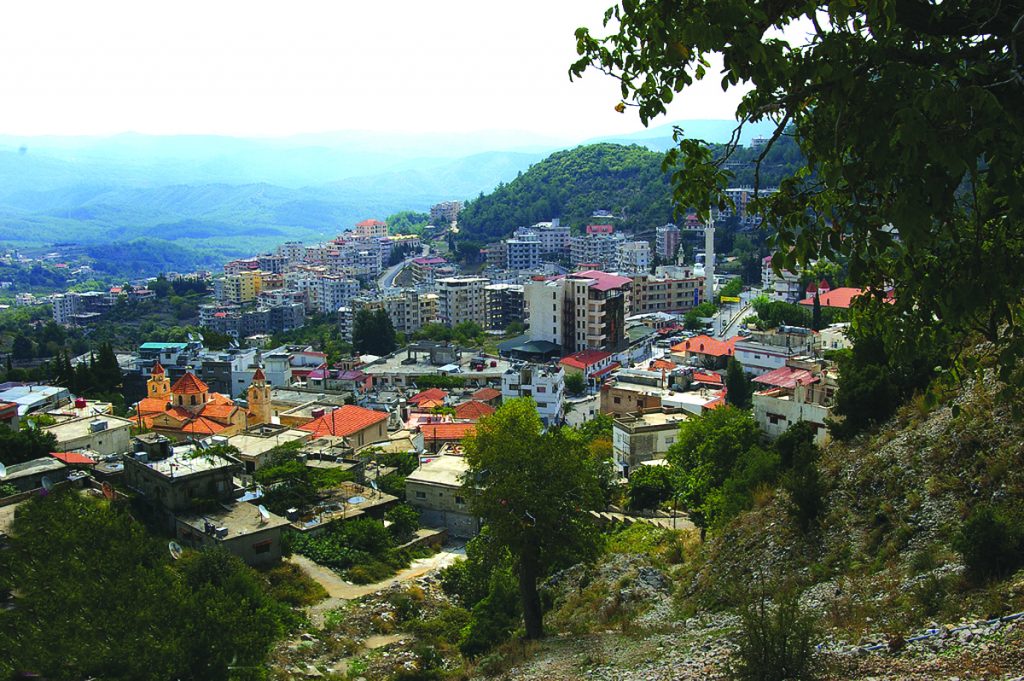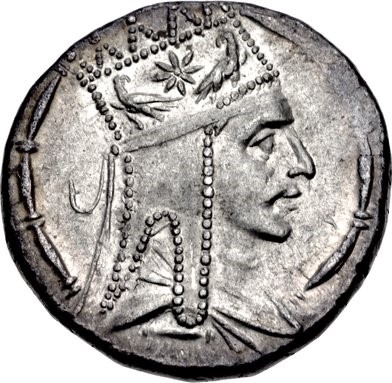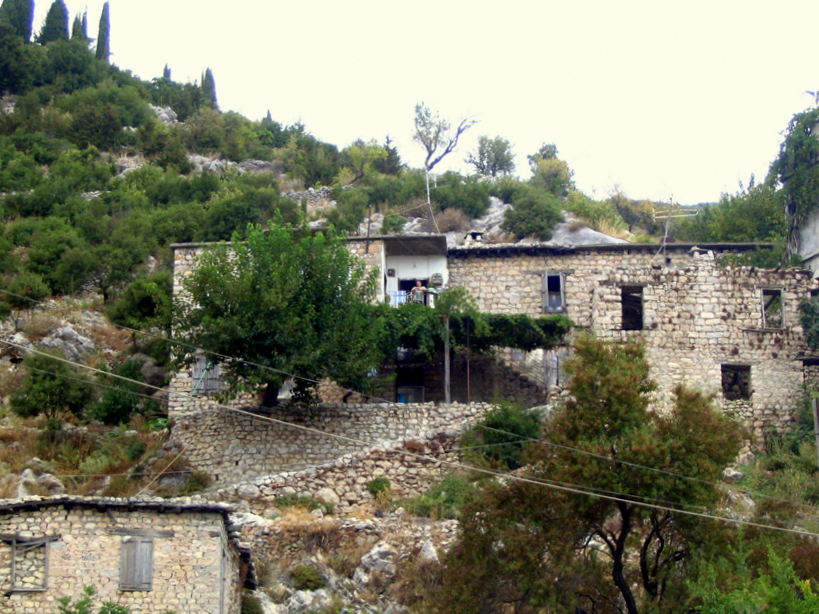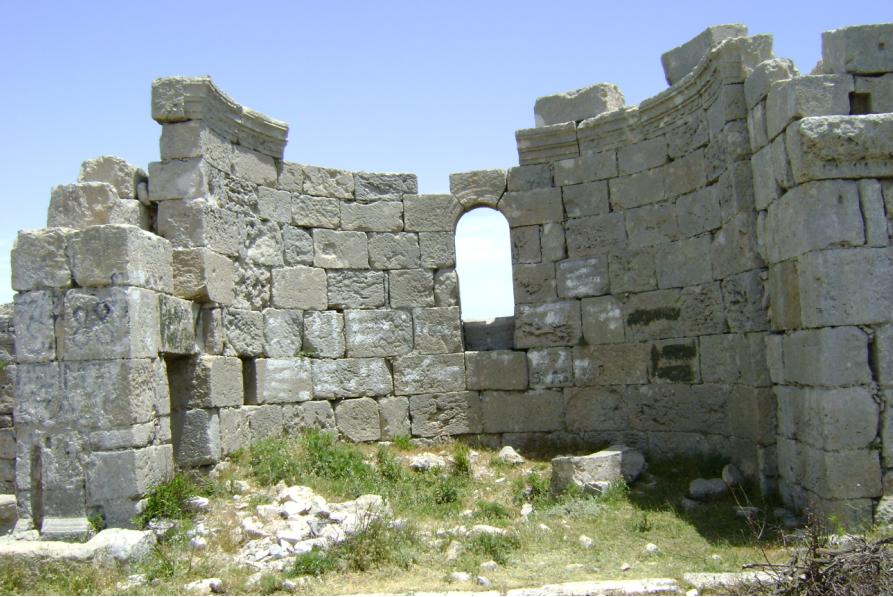
Toponym
There are no written sources about the early history of the Kessab region, but the first record of the name of Kessab was mentioned in a historical document dating back to the Crusaders period when Duke Belmont I granted the region of ‘Kasbisi’ to the family of Peter the Hermit. Either Kasbisi, Cassembella or most probably the Latin expression Casa Bella are the names from which Kessab was derived.
Population
In the beginning of the 20th century, the population of Kessab region was around 6,000 (all Armenians), with more than 20 schools, as a result of denominational and political divisions.[1] According to the statistics of the Armenian Apostolic Patriarchate of Constantinople, there lived 8,736 Armenians in nine localities of the kaza of Şuğur/Kessab, maintaining nine churches and eight (?) schools.[2]
On the left bank of the Orontes, “in the mountainous regions around Mt. Cassius (Cebelakra) in the western part of the kaza of Şuğur, lay a second cluster of nine Armenian villages located around the little town of Kesab. In 1914, nearly 9,000 Armenians lived in these localities: Kesab (pop. 4,760), Karaduran (pop. 1,505), Ekizoluk (pop. 560), Kulkene (pop. 525) Kayacik (pop. 119), Eskiyören (pop. 245), Çakalcık (pop. 350), Duzağc (pop. 532). Mt. Cassius, a mountain refuge par excellence, offered another advantage: it extended into the Mediterranean and thus offered access to a well-protected little harbor that was inaccessible from the coast. The relative security offered by these mountains was counterbalanced by the fact that these villages were all but isolated from the rest of the world and lived in virtual autarchy. Communication with Antakya and Latakiye were maintained thanks only to narrow mule paths.”[3]
History

The region of Kessab was part of the ancient civilization that spread from the Syrian coasts up to the Orontes River, six millennia ago. During the Seleucid period the Kessab region was at the centre of the triad comprised by Antioch, Seleucia and Laodicea. The Laodicea-Seleucia coastal road passed by the Karad(o)uran bay whereas the Laodicea-Antioch road passed through the Duzaghaj valley. The Mount Cas(s)ius at those times, was believed to have been the sanctuary of Zeus. During the reign of the ruler of the short-lived Armenian Empire Tigranes The Great, in the 1st century B.C., and later the Roman era, the Syrian coast flourished greatly and had a positive effect on the development of the Kessab region.
Being located on the borders of the Armenian Kingdom of Cilicia, the region of Kessab was gradually developed by its Armenian migrants. A research published in 2009 by renowned linguist Hagop Cholakian on the peculiarities of the Kessab Armenian dialect and the dialects of the Armenians in the region of Alexandretta and Suediye, shows that the Armenians of Kessab and the surrounding villages are the remainders of immigrants who came from the region of Antioch. The migration of the Armenians to the region increased in the 14th and the 15th centuries, during the Mamluk and the Ottoman periods, in an attempt to avoid persecutions, trying to find much safer mountainous regions such as Kessab and Musa Dagh. The first Armenian refugees settled in the area now called Esguran. After some time, they moved uphill and settled in the area now called the town of Kessab, turning it to a center of the whole region and the destination of new refugees.
During the 1850s Kessab turned into a mission field with the arrival of Evangelical and Catholic missionaries, raising anger among the Armenians of the region who were following the Armenian Apostolic Church.

Destruction
During the Adana massacres in April 1909, 161 people were murdered in Kessab and many material goods were destroyed. The Catholicos Sahak I. Khabaian visited Kessab afterwards.[4]
The Armenian Genocide began in the Kessab area on 26 July 1915 with the order to deport the inhabitants within five days. Although there were plans to resist and entrench themselves in the mountains of Dounag near Karaduran – with partial backing from the Karaduran priest Bedros Papoujian-Aprahamian – their realization failed. The Armenians were driven from Karaduran into two desert areas: one towards Deir ez-Zor (Der Zor) and the other southwards to Jordan. In the process, nearly 5,000 Armenians died. Some died in Jizr ash-Shughur, others in Hama or Homs, and others on their way to Damascus or Jordan. Most of the deportees died in the desert of Der Zor.[5]
“According to Mardiros Kushakjian, when rumors that the Armenians of the region were to be deported began making the rounds – Reverend Andreasian had arrived the day before – a meeting of the Armenian leaders of the villages of Musadağ and Kesab was immediately convened in Antioch on 26 July. The leaders of the villages of the right bank of the Orontes suggested to their neighbors of the left bank, the villages of Kesab, that they collaborate in organizing a common defense effort if the information in their possession proved true. The notables of Kesab, however, rejected this suggestion and decided to submit to whatever orders the authorities might issue. They wished to demonstrate the loyalty that Armenian political and religious leaders had demanded that they show under all circumstances since the outbreak of the war. Thus, the entire population of Kesab was deported – however, toward Homs and Hama – in the first half of August 1915, as was that of Alexandretta (…).”[6]
After the First World War
After the armistice of 1918, the survivors from Kessab returned to their homeland, which lasted until 1920. The inhabitants of eastern and northern areas of Kessab region continued to live in fear because of raids by bandits from neighboring Turkish localities. A militia of 40 Armenian volunteers from Kessab repelled several attacks by bandits. The situation calmed down when the French entered Kessab in 1922.
On 5 July 1938, the Turkish army, in agreement with the French mandate power, occupied the Sancak Alexandretta including Kessab and established the state of Hatay. About 50,000 refugees from the area, including 22,000 Armenians and 8000 Orthodox Christians, found refuge in the remaining Syria and Lebanon. On 23 June 1939, the government of Hatay was dissolved and the area was annexed to Turkey. However, representatives of Armenians in Paris, Cardinal Gregorio Pietro Agagianian and papal representative in Syria and Lebanon Remi Leprert achieved that a large part of the municipal territory of Kessab with Armenian population including the town itself was separated from the Turkish territory and remained with Syria. The annexation of the Sancak of Alexandretta by Turkey nevertheless proved to be an economic disaster for the Armenians of Kessab: Kasios Mountain with the fields, cattle pastures and laurel plantations of many residents of Kessab was left to the Turks. Likewise, the Barlum (also Barlaam) Monastery (10th century), where the Assumption of the Holy Mother of God (Surb Astvadzadzin) was traditionally celebrated every year in August, was lost. Only a badly dilapidated ruin remains today. As a result of the loss of the land, many Armenians, especially farmers and shepherds from the surroundings of Kessab, moved away in the following years. In 1947, many villagers took advantage of the invitation of the government of the Armenian SSR to emigrate to Soviet Armenia. From the village of Karaduran alone, where 45 families still lived in 2011, these were 800 people.
